

World Heritage Sites
designated by
UNESCO
the World Heritage Committee has inscribed 890 properties on the World Heritage List
The following are some I have visited:
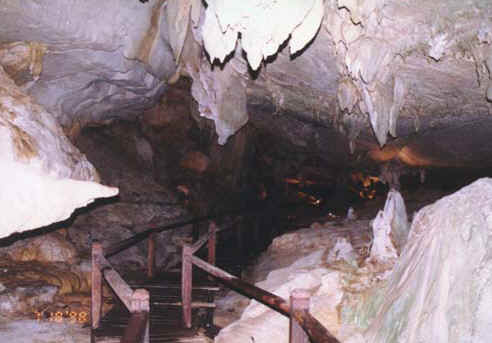
Lang Cave has the most active formations
Important both for its high biodiversity and for its karst features, Gunung Mulu National Park on the island of Borneo (State of Sarawak) is the most studied tropical karst area in the world. The 52,864ha park has 17 vegetation zones, exhibiting some 3,500 species of vascular plants. Its palm species are particularly rich, with 109 species in 20 genera noted. The park is dominated by Gunung Mulu, a 2,377m high pinnacle karst, said to be the most cavernous mountain in the world, with at least 295km of explored caves providing a major wildlife spectacle in terms of millions of cave swiftlets and bats. The Sarawak Chamber, 600m x 415m x 80m high, is the largest known cave chamber in the world.
| Kinabalu Park, Malaysia |
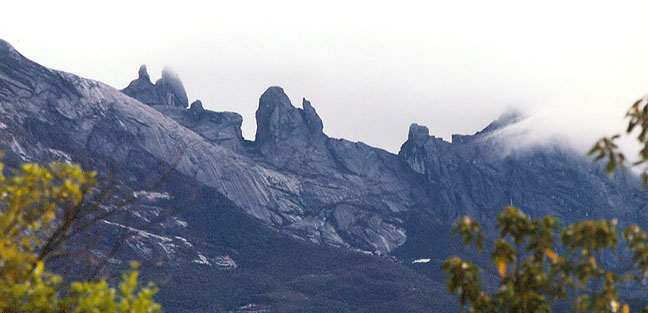
peak of Mt. Kinabalu (13,454 feet)
Kinabalu Park, on the nothern end of the island of Borneo in the State of Sabah, is dominated by Mount Kinabalu (4,095m), the highest mountain between the Himalayas and New Guinea. Within its altitudinal range it presents a wide array of habitats : from rich tropical lowland and hill rainforest to tropical montane forest, sub-alpine forest and scrub of the higher elevations. It has been identified as a Centre of Plant Diversity for Southeast Asia, and is exceptionally rich in species with elements from the Himalayas, China, Australia, Malaysia and pantropical floras.
| Old Towns of Djenné, Mali |
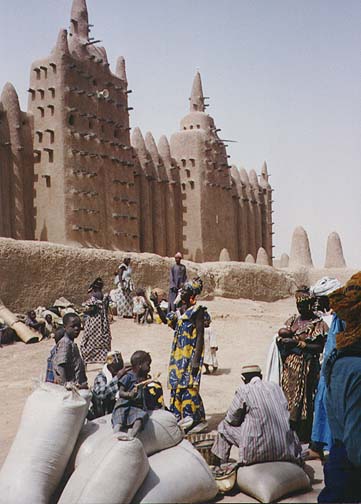
Mosque in Djenne
Inhabited since 250 B.C., Djenné developed into a market centre and a link in the trans-Saharan gold trade. In the 15th and 16th centuries, it became one of the spiritual centres for the dissemination of Islam. Its traditional houses, of which close to 2000 have survived, are built on hillocks (toguere) and adapted to the environment of seasonal floods.
| Timbuktu, Mali |
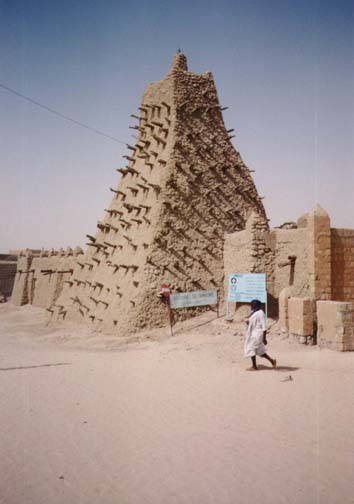
Mosque in Timbuktu
Home of the prestigious Koranic Sankore University and other médersas, Timbuktu was in the 15th and 16th centuries an intellectual and spiritual capital and a centre for the expansion of Islam throughout Africa. Its three great mosques, the Djingareyber, Sankore and Sidi Yahia, speak of Timbuktu's Golden Age. Although restored in the 16th century, these monuments are today threatened by the encroachment of sand.
| Cliff of Bandiagara (Land of the Dogons), Mali |
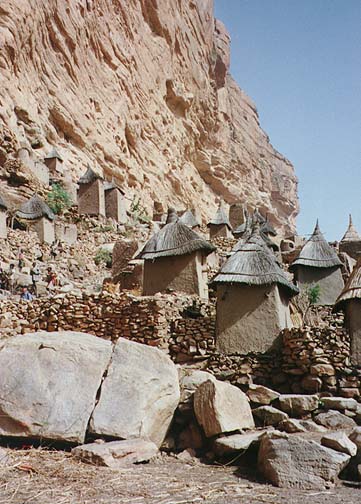
The DOGON villages are located along the Bandiagara cliff in the Sangha region of MALI
These cliffs protect architectural structures of great beauty (houses, granaries, altars, sanctuaries and toguna -- meeting places), which have been for centuries the soul of traditional, secular Dogon culture. The Bandiagara plateau is one of the most impressive geological and landscape features in West Africa.
| Hal Saflieni Hypogeum, Malta |
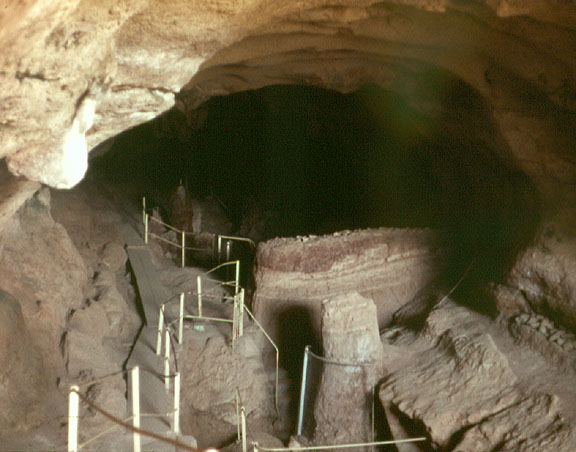
An enormous subterranean structure excavated with cyclopean rigging to lift huge blocks of coralline limestone around the year 2500 B.C., the Hypogeum, possibly conceived as a sanctuary, has been a necropolis since prehistoric times.
| City of Valetta, Malta |

Valetta
The capital of the Republic of Malta is irrevocably linked to the history of the military and charitable order of St John of Jerusalem. Ruled successively by the Phoenicians, Greeks, Carthaginians, Romans, Byzantines, Arabs and the Order of the Knights of St John, its 320 monuments, confined within an area of 55 hectares, make it one of the most concentrated historic areas in the world.
| Megalithic Temples of Malta, Malta |
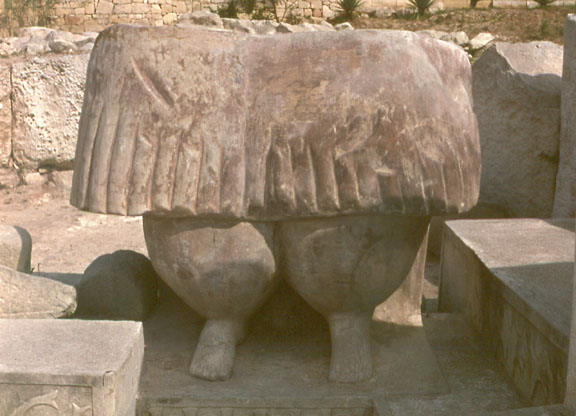
fertility symbol
Seven megalithic temples are to be found on the islands of Malta and Gozo, each a result of an individual development. The Ggantija complex on the island of Gozo is remarkable for its superhuman achievements dating from the Bronze Age. On the island of Malta, the temples of Hagar Qin, Mnajdra and Tarxien are unique architectural masterpieces, given the very limited resources of their builders. The Ta'Hagrat and Skorba complexes bear witness to the development of the temple tradition in Malta.
| Pre-Hispanic City and National Park of Palenque, Mexico |

Palenque in the morning mist
A prime example of a Mayan sanctuary of the classical period, Palenque was at its height between 500 and 700 A.D. and had a great influence in the entire basin of the Usumacinta River. The elegance and craftsmanship of the construction, as well as the lightness of the sculpted reliefs illustrating Mayan mythology, attest to the creative genius of this civilization.
| Historic Centre of Mexico City and Xochimilco, Mexico |

Cathedral
on the Zocalo
(officially the Plaza of the Constitution)
Built in the 16th century by the Spanish upon the ruins of Tenochtitlan, the old Aztec capital, the city is today one of the largest and most densely populated cities of the world. Besides the five Aztec temples, there is also the cathedral, and 19th- and 20th- century public edifices such as the Palacio de las Bellas Artes. Xochimilco, 28 km south of the city, with its network of canals and artificial islands is an exceptional testimony of the efforts of the Aztec people to build a habitat amid an unfavourable environment.
| Pre-Hispanic City of Teotihuacan, Mexico |
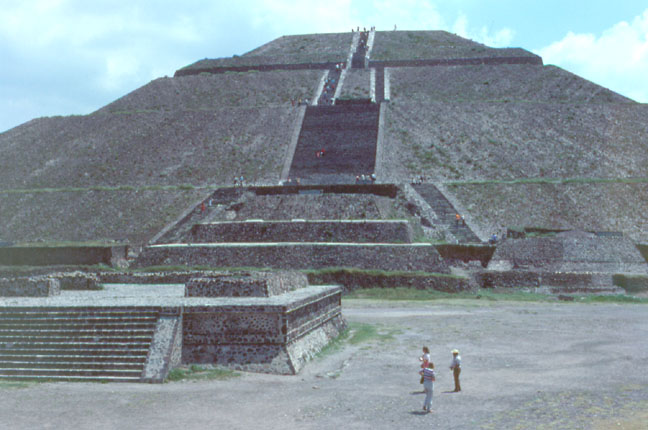
Pyramid of the Sun
A holy city built between the 1st and 7th centuries A.D., Teotihuacan, "the place where the gods were created", is known for the geometrical and symbolic arrangement of its monuments, and for their enormous size - in particular, the pyramids to the Sun and the Moon. It is an exceptional archaeological site by virtue of its beauty as well as what it teaches about the ceremonial centres and pre-urban structures of ancient Mexico.
| Historic Centre of Oaxaca and Archaeological Site of Monte Alban, Mexico |

Monte Alban
Inhabited over a period of 1500 years by a succession of peoples - Olmecs, Zapotecs and Mixtecs - the terraces, dams, canals, pyramids and artificial mounds of Monte Alban were literally carved out of the mountain and are the symbols of a sacred topography. Nearby, the checkerboard design of Oaxaca is a good example of the Spanish colonial architecture.
| Pre-Hispanic City of Chichen-Itza, Mexico |
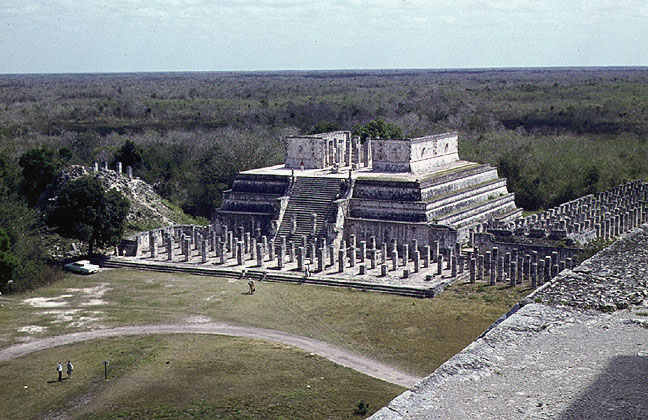
Temple of
the Warriors as seen from the top
of the temple of Kukulcan
(notice the flatness of the landscape)
This site is one of the most impressive testimonies to the Mayan-Toltec civilization of the Yucatan (10th to 15th centuries). It contains some of the most outstanding examples of Central American architecture, combining Mayan construction techniques and Toltec sculpted decoration.
| The Prehispanic Town of Uxmal, Mexico |
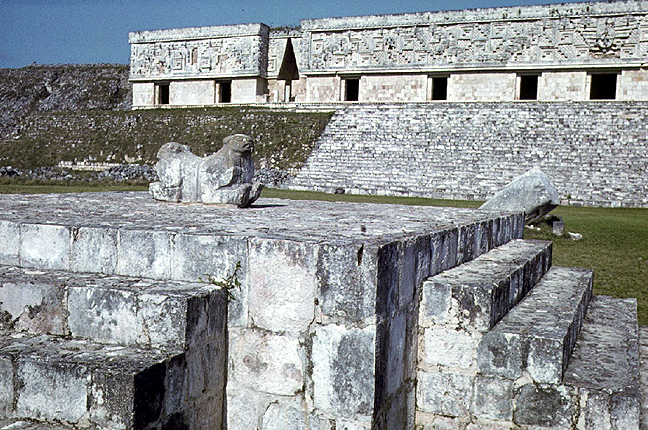
Chaac presiding over the site
The Mayan town of Uxmal, in the Yucatan, was founded in about 700 and had about 25,000 inhabitants. Its buildings, which date from between 700 and 1000, are arranged according to astronomical knowledge of the period. The Pyramid of the Soothsayer, as the Spanish called it, dominates the ceremonial centre which comprises carefully-designed buildings richly decorated with symbols and with sculptures depicting Chaac, the rain god. The ceremonial sites of Uxmal, Kabáh, Labná and Sayil together represent the pinnacle of Mayan art and architecture.
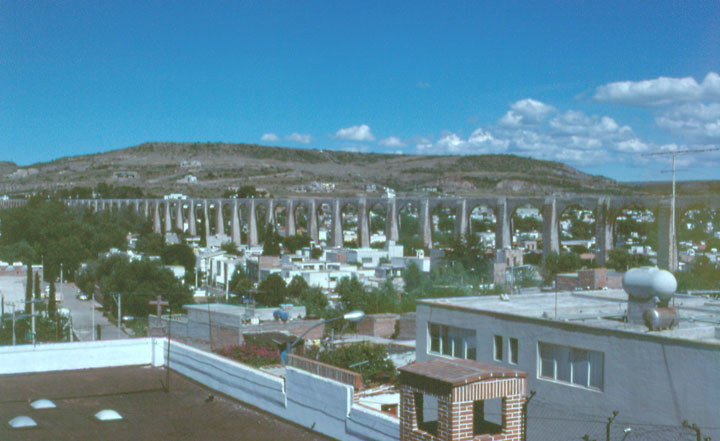
Los Arcos (the aqueduct)
The old colonial town of Querétaro is unusual in retaining side by side the original street patterns of both the native Indian inhabitants and the Spanish conquerors. The twisting streets of the Indian quarters contrast with the geometrically laid out section of the Spanish. The Otomi, the Tarasco, the Chichimeca and the Spanish lived peacefully together in the town, notable for its many extravagantly adorned civil and religious baroque monuments from its golden age in the 17th and 18th centuries.
My Life List of World Heritage sites I have visited
![]()
Return to Favorite Experiences page
![]()